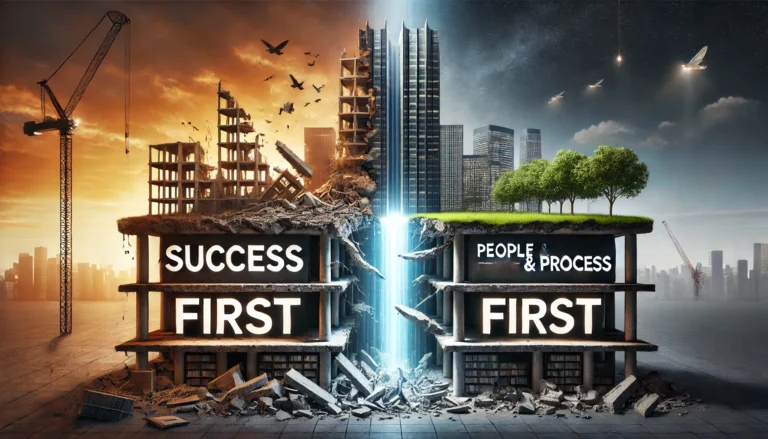It Takes Effort to Move
Who doesn’t like flying a kite? Like most things in life worth enjoying, sometimes it takes a little bit of effort. Whether collecting wood before warming up next to a fire on a cold night, running to catch the wind when flying a kite, or deploying and implementing a massive digital transformation project, anything that benefits you or others, typically takes a certain level of effort.
It is said that knowledge is power, and this is true to a certain extent. In many situations, having knowledge and understanding of a situation can be incredibly valuable. However, there are times when taking action is more important than simply knowing what to do, in fact we do this thousands of times a day, and don’t even realize it.
In CPR training they teach you that the first step is to check for breathing. There are many factors that could cause a person to not breath, but if you are not breathing, then nothing else matters. Just like a water mill or a wind turbine, it may not be working because it is not moving. This does bring up an interesting question; Whose responsibility is it to move? Some things are not made to move by themselves/itself. The wind turbines need wind and watermill needs water. What motivates us to move can be different, but ultimately we are not objects or things and we must take responsibility for our own motion and motivation.
3 Things That can Help You Start To Take Responsibility for Your Own Motivation
- Set achievable and relevant goals and prioritize them.
- Identify what motivates you and seek out opportunities that tap into those sources of motivation.
- Prioritize self-care by getting enough sleep, eating healthily, exercising regularly, and taking breaks when needed.
One thing you will notice is how all of these things have a common theme, creating clarity. Our mind has a way of adding noise just as much as it ignores it.. We must find small and fast ways to direct our focus on the things that matter and more importantly, what we can do now to move towards that.
Finding the ROI of Motion
When you take this concept of moving to the work place, the same principal applies. If you are not taking action, you are not going anywhere, right, wrong, or indifferent, you have to act. There is a slogan I like to say “failure starts when you stop,” it has become my mantra, and it is true in many more ways than you would think. Just to be clear here, stopping, in this context, does not mean to stop in the traditional physical sense. Just because you take your foot off the gas, doesn’t mean you come to a screeching halt. Applying the brakes is much different than letting off the gas. You may still be moving, but you haven’t stopped. Now, to ‘stop’ from getting to into the weeds…see what I did there; I will digress, but I hope you are seeing where I am trying to take this.
“Failure Starts When You Stop”
Many times we underestimate the effort it will take to accomplish a goal due to our overestimation of the knowledge we have. But why does that matter?
There is a thing that happens when talking to someone about a goal or greatly thinking about a goal and not taking action. This phenomenon is commonly known as “premature cognitive commitment” or “premature sense of completion”. It occurs when someone talks or thinks about their goals in a way that gives them a false sense of accomplishment, even though they have not yet achieved the desired outcome. This can lead to complacency or a lack of motivation to continue working towards the goal, as the person feels they have already achieved it in some way. It’s important to maintain a clear and realistic perspective on your goals and keep working towards them until they are actually achieved. Just like taking your foot off the gas, you can sometimes feel like you are still going somewhere because you are moving, but in reality you are slowing down. You have to act to gain momentum.
Moving is more important than knowing, and here is why. Let’s say you want to lose a few pounds. Everyone knows that the key to losing weight is to output more calories than you intake. Workout more, eat less or at least eat better, it is that simple. Now, you could argue that someone may not know the formula, but if you just know something and don’t actually do anything, than knowing doesn’t really matter.
“In any moment of decision, the best thing you can do is the right thing, the next best thing is the wrong thing, and the worst thing you can do is nothing.” – Theodore Roosevelt
The Artificial Intelligence Movement
There seems to be this common theme around artificial intelligence that it will replace more than it will create and there is a genuine fear that A.I. is becoming too human-like and devaluing you and me. (I talk about this in a previous article.) But, I would like to challenge the perception that A.I. is becoming human-like. What if it is human’s that have been acting like machines all along. It is a peculiar concept to think about, but a much more logical one once you simplify. Our world and lives revolve around repetitious activities, tasks, or sequences. From the earth revolving around the sun, to going to work or eating, everything repeats. Yes, one big hamster wheel. One could ask, “Are we creating (AI) in our own image, and if so, is it aiding or hindering our ability to move forward”.
While it is true that AI can replace many of the more mundane and repetitive tasks that are currently performed by human professionals, it is important to recognize that there are many tasks that still require the unique skills and abilities of human professionals. For example, tasks that involve creativity, emotional intelligence, and complex decision-making are still better suited to human professionals than to AI-powered machines.
Instead of focusing on replacing human professionals with AI-powered machines, it is important to focus on ways in which AI can enhance and complement human capabilities and empower us to move forward. This might involve automating certain tasks while still retaining the human element in others, or developing AI-powered tools and systems that support and enhance human decision-making rather than replacing it.
While it is true that every industrial revolution from steam to automation has created more jobs than it has displaced, there is a high probability that 4.0 and beyond with robotics, AI and big data, will do the same; and just in the same way you have the ability to adapt to change, you also have the ability to make moves that will benefit you today and years to come.
Other people’s inability to act (or lack or motion) can be your opportunity to succeed.
In today’s fast-paced world, we are bombarded with information from all directions. We have access to an endless supply of knowledge at our fingertips, with the internet providing us with answers to almost any question we might have. While this is undoubtedly a valuable resource, it can also be overwhelming, leading to analysis paralysis.
Making Moves
Analysis paralysis is the state of being unable to make a decision due to overthinking or overanalyzing a situation. When we have too much information, we can become bogged down in trying to weigh up all the options and consider all the possible outcomes, leading us to become stuck in indecision.
In situations like this, taking action can be the key to breaking out of the cycle of analysis paralysis. Even if we don’t have all the information or we’re not entirely sure what the best course of action is, sometimes the act of taking a step forward can be enough to start the momentum we need to move forward.
When we take action, we begin to gather feedback and information about the situation. We learn what works and what doesn’t, and we can adjust our approach accordingly. This feedback loop allows us to iterate and improve, making progress towards our goals.
Of course, this is not to say that knowledge and understanding are not important. In many situations, having a good understanding of a topic can help us make better decisions and take more effective or strategic actions. However, it’s important to recognize that sometimes we need to take action even if we don’t have all the information or we’re not entirely sure what the best course of action is.
In addition, taking action can also help us to build resilience and develop the confidence we need to tackle more complex challenges in the future. By taking action, we prove to ourselves that we are capable of making progress and achieving our goals, even in the face of uncertainty and adversity.
According to a study conducted by Cornell University, the average person makes approximately 35,000 decisions every day. While not all of these decisions require complete information, many of them do require some level of information or knowledge to make informed choices.
Furthermore, research shows that people tend to make decisions based on incomplete information more often than we might think. This is because our brains are wired to fill in gaps in our knowledge and make assumptions based on limited information. In fact, studies suggest that people make decisions based on incomplete information up to 90% of the time.
Here Are 5 Ways to Move Toward a Goal and Stop Thinking so Much:
- Break down your goal into small, manageable steps: Sometimes thinking about a big goal can be overwhelming and prevent you from taking action. Break your goal down into smaller, achievable steps, and focus on completing each step one at a time. This can make the goal feel more manageable and help you take action without overthinking.
- Take imperfect action: Sometimes, we overthink things because we want everything to be perfect before we take action. But perfectionism can be paralyzing. Instead, focus on taking imperfect action. It’s better to take some action, even if it’s not perfect, than to do nothing at all.
- Set deadlines and create accountability: Setting deadlines for yourself and sharing your goal with others can create accountability and help you take action. If you know that someone else is expecting you to complete a task by a certain date, it can motivate you to take action and stop overthinking.
- Practice mindfulness: Mindfulness can help you stay present in the moment and reduce overthinking. Focus on your breath and bring your attention back to the present moment whenever you notice yourself getting caught up in thoughts about the future or past.
- Embrace failure: Failure is a natural part of the learning process, but it can be scary and prevent us from taking action. Instead of fearing failure, embrace it as an opportunity to learn and grow. By reframing failure in a positive light, you can reduce overthinking and take more action towards your goal.
As you can see; while knowledge and understanding are undoubtedly valuable, there are times when taking action is more important than simply knowing what to do and in fact, we already do that all the time.
AI Advisory Group is one of the most supportive executive leadership companies for small and medium size organizations. The information we provide in this article may contain both opinions, facts, statistics, and other source references. You should never make a decision solely based off of the information provided. Please feel free to contact us here for any questions, concerns, or additional information.





